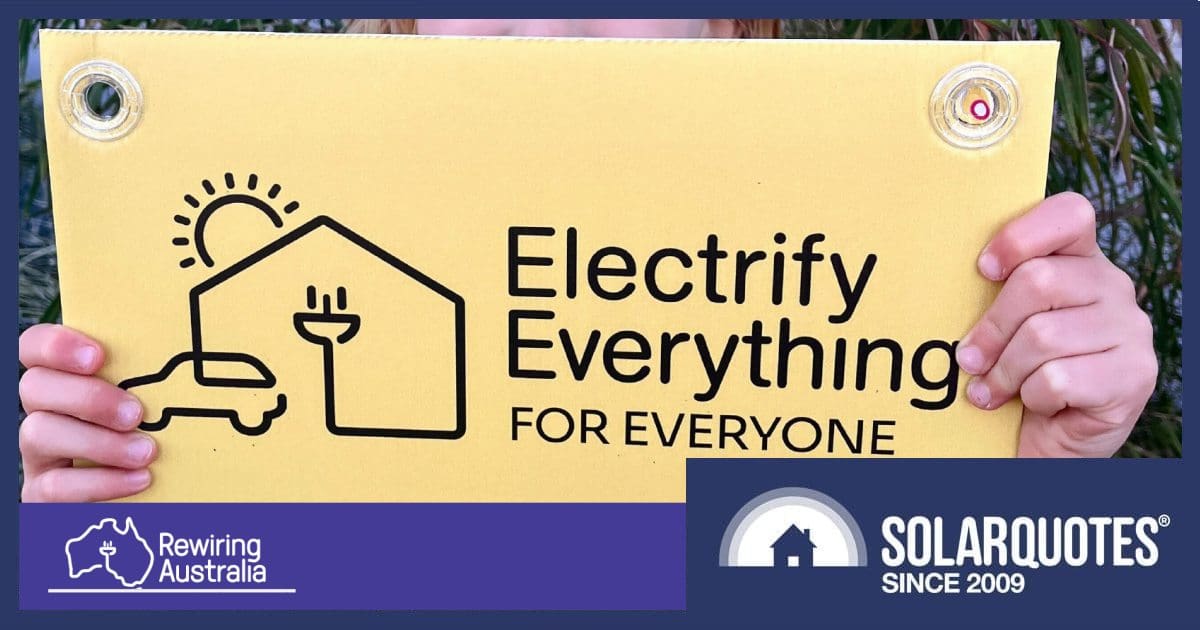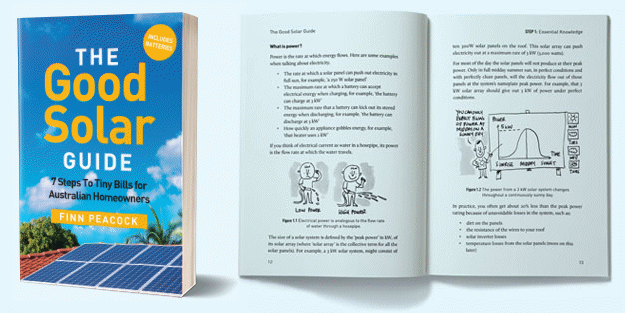
Whether it happens in a series of steps or leaps, home electrification can save Australian households big bucks on energy – even with upfront costs and interest repayments included – according to a new report.
Rewiring Australia is a non-profit organisation demonstrating and communicating the financial, environmental and energy system benefits of home electrification. In its latest report, the group says Australia is one of the first countries to pass an “electrification tipping point”, where an energy-efficient electric appliance or vehicle is cheaper over the long term than a fossil-fuel powered alternative. This also takes into account upfront costs and finance at 5.5%.
The report focuses on five key areas – and here’s what Rewiring Australia estimates can be saved in each.
Space Heating – Reverse Cycle Air-Conditioner
A reverse cycle air conditioner offers the lowest cost and lowest emissions method to heat a home. The report indicates savings of $530 a year on bills (2025 costs) compared to gas heating.
Over 15 years, and including upfront costs, an average of $8,500 can be saved.
Water Heating – Heat Pump Hot Water System
A heat pump hot water system will save an average of $250 in bills per year in 2025 compared to using an instant gas water heater says the report, or $400 if the home has solar panels.
Over a 15- year lifetime with upfront costs included saves $2,500 on average for non-solar homes and $5,400 for solar households.
Cooking With Gas Electricity
Electric cooktops not only help avoid toxic gas emissions in your home, but can save a modest $20 – $30 a year.
But where the big savings can be is if an electric cooktop is the last on item on the home electrification to-do list. Then a gas connection can be ditched1 – saving around $250 a year on gas supply charges. This adds up to $4,700 over 15 years.
Driving – Electric Cars
Prices of electric vehicles are dropping and we have a much wider choice of models available in Australia today than just a couple of years ago. Owning an EV can save:
- $1,500 per year in driving costs (2025), or $2,500 with a home solar power system.
- $17,000 over 15 years with upfront costs included compared to a similar petrol car, or $35,000 when charging an EV using home solar.
Rooftop Solar Panels
The report states even a “fossil fuel home” can save an average of $980 per year with rooftop solar power. If the home is electrified, the savings are pegged at an average $2,200 a year.
We had a 10kW PV system installed on our Adelaide home in late September 2022 (without solar finance) and acquired an EV in March 2023, but still have a gas hot water system and cooktop. The solar savings to date have been around $5,600 – averaging approximately $2,440 a year. At this rate, simple payback will be achieved in ~4 years since installation.
If you’d like to get an idea of the approximate financial benefit in your circumstances, try the SolarQuotes Solar and Battery Calculator.
Speaking of which…
What About Home Batteries?
Home battery costs are dropping – slowly – and can save money for many Australian solar households says the report. This would particularly apply in jurisdictions where solar battery rebates are available. Furthermore, a home battery can provide backup power in a blackout situation (if you have the right one).
While solar is a bit of a no-brainer for most households with a suitable rooftop, some serious number-crunching should be performed before deciding to buy a home battery. Again, SolarQuotes can help with our standard solar and battery calculator mentioned above. But for more accurate figures based on your electricity consumption profile over the last 12 months, try our dedicated Battery Calculator.
Summing up, while your own mileage will undoubtedly vary, “The Electrification Tipping Point” report says the average Australian home that goes fully electric with solar (9kW system) and battery storage (10kWh capacity) included can save $4,100 per year compared to a home with gas appliances and petrol vehicles, with upfront costs and interest payments accounted for.
“This tipping point shows Australians can save money on energy bills and cut emissions as soon as they electrify,” says Rewiring Australia Co-Founder and Chief Scientist Dr Saul Griffith. “This is a far better deal than what an energy bill rebate or fuel excise [cut] can offer.”
But it’s important to note achieving maximum savings requires good quality equipment, installation and appropriate maintenance.
Footnotes
- Note that it can be much cheaper having your gas disconnected rather than abolished. ↩

 RSS - Posts
RSS - Posts



Hey Michael and the team,
I can see there is Battery Savings Calculator on this website.
But where can I find a good Battery Size Calculator (not necessarily on this website)?
We have 12.76 Kwh solar panels with 10 kw Fronius hybrid inverter.
I also have NEM12 csv file from Energex.
So if we plan to install the battery, how can I understand what size we need based on our solar export and grid usage data?
Hi Pete,
Once you get into the battery savings calculator, there’s an option to pick different size batteries.
Take Sungrow as an example and you can compare your data using a 9.6kWh battery, then toggle back to see how it changes with a 24kWh unit.
Don’t forget to observe the different seasonal variations. When I tried it my 15kW array wasn’t big enough to fully charge a large battery in winter.